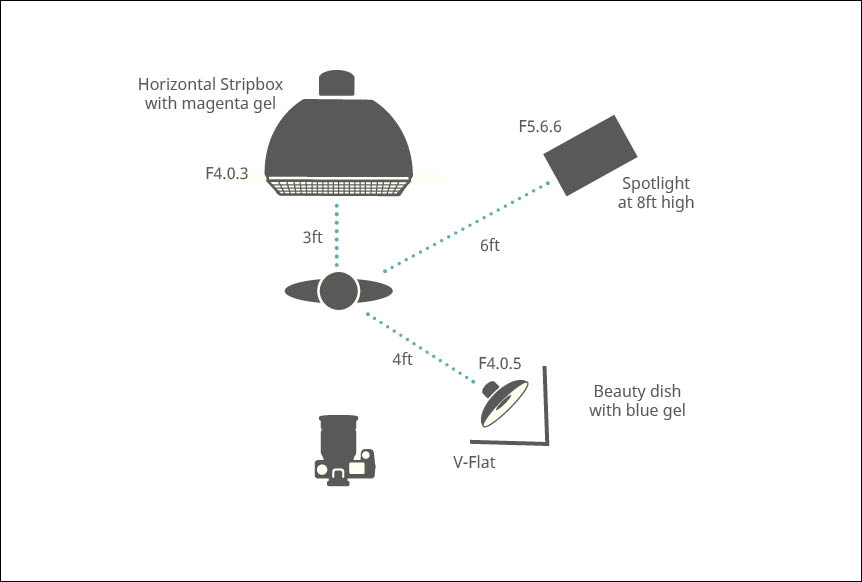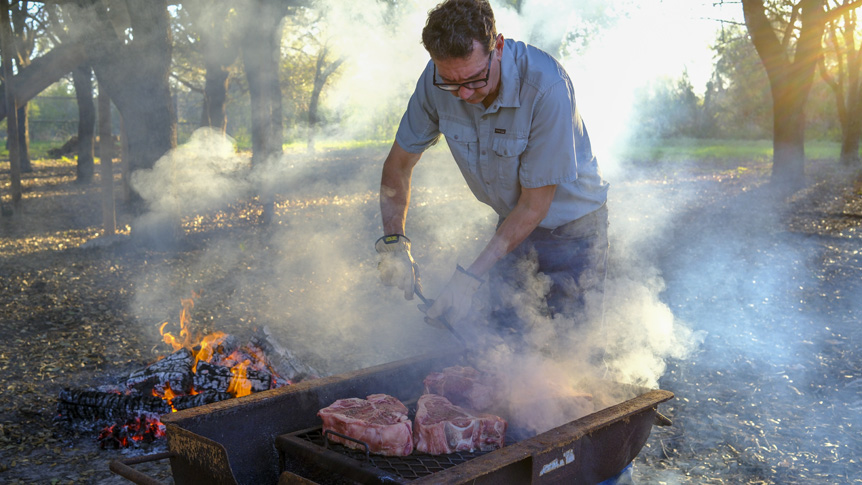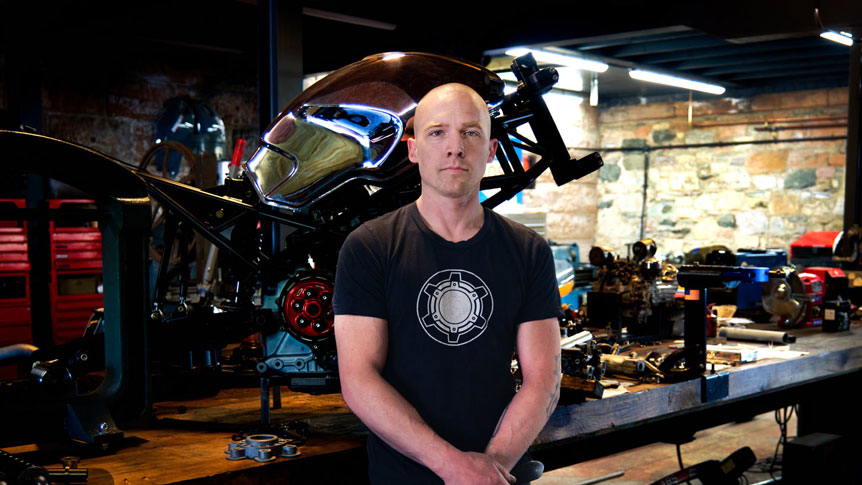
 6 minute read
6 minute read
Get the Look: Commercial
What kind of setups makes a commercial image most appealing, how are they done, and why? These are the topics of this chapter in Ab Sesay’s lighting masterclass
Advertising photography has to grab the viewer’s attention. It needs enough impact to stop them from scrolling or turning the page. One way of achieving this is to ramp up contrast and experiment with color. That’s what we did in this test session for a top sportswear brand.
The lighting intention for these images is directed towards pure impact. You start with a blank canvas and fill it with your ideas. It does not matter if it looks ‘lit’. Quite the opposite. Because this is a pure advertising project, not an e-commerce session, we have more creative license. These aren’t catalogue style images – they’re more heroic and stylized.

Photo 2022 © Ab Sesay | FUJIFILM GFX100 and FUJINON GF32-64mmF4 R LM WR, 1/125 sec at F8, ISO 640
Why You Should Try It
Projects like this are a great way to fill your portfolio with looks that appeal to specific types of client, and show off your creativity. You can be expressive and playful, but images need to display more than that. They should show your ability to take lighting cues from the product design – and think with the printed page or web layout in mind. For instance, creating even backgrounds or leaving negative space for copy and sells.
Your image selection should show that you’re considering the product, too. In a lot of the images up to this point, the model has been the focus – but here we’re getting away from portraiture, and thinking more about the product. So, as well as more general images, it was important to get frames where we cropped out or defocused the model, making it just about the shoes.

Photo 2022 © Ab Sesay | FUJIFILM GFX100 and FUJINON GF32-64mmF4 R LM WR, 1/125 sec at F8, ISO 100
How We Came Up with This Look
These are advertising images, not pure portraits or beauty photos, so we let the product and brand take over, and light accordingly. Playing off the tones in the subject’s sportswear, I used blue and magenta gels, arranging the lights so the colors would be pure in some areas and overlap in others. They also wash over the backdrop to give an infinite look. And where the two colors blend in the background, a horizon is created, so the setup has depth.
Such strongly colored lighting makes images stand out. The mix is unusual, and the accent lights make the subject look as though she’s glowing under futuristic neon. In theatre and live shows, you’ll see a similar approach, with gels, accent lights, and spotlights mixing to make a dramatic impact. It’s out of the ordinary and draws the eye.

Photo 2022 © Ab Sesay | FUJIFILM GFX100 and FUJINON GF32-64mmF4 R LM WR, 1/125 sec at F8, ISO 100
How to Get This Look
Starting off with just a white infinity curve, I added a spotlight, angled down from 8ft. This is not gelled and adds some edge lighting. I’m using a spotlight because it has very little spill. That’s important, as any stray light will affect the saturation of the colors added next with the gels. The white light from the spotlight also gives a bit of neutrality amidst the strong colors, as well as bouncing off the white floor for a little extra fill.
Next is the accent light. This is a 3ft softbox, positioned horizontally, again raised above the subject and angled down from behind. Fitted with a magenta gel, it creates a warm glow around her. And though directed – because the light is still diffused – it’s bouncing all over the set, filling the background with color.



Photo 2022 © Ab Sesay | Spotlight
Photo 2022 © Ab Sesay | Spotlight and accent light
Photo 2022 © Ab Sesay | All lights
Together, the white spotlight and magenta accent light serve to highlight her physique. This effect is great for active subjects, like athletes or dancers, showing the tone of their muscles, as well as separating them from the background.
Finally, we add a blue-gelled fill light. This is a beauty dish that’s bouncing into a white V-flat. As a very broad, soft source, it makes the blue light wash everywhere. Hitting the background, it mixes with the magenta to give a purple tone in that area, but there’s less blue on the floor because of the way the flash is angled straight into the V-flat.

Keeping Colors Strong
For the strongest colors, make sure your gels are well fitted. I used gaffer tape all around the inside of the 3ft strip box, preventing any white light passing through alongside the magenta. The blue gel on the beauty dish is also fitted tightly.
The stronger the light from the gelled flashes in the ratio, the more it will wash out. To prevent this, underexpose the gelled lights. This could mean dialing the power down by anything up to three stops to get the color well saturated. In this setup, I was exposing at F8, but the gelled lights were F4, while the spotlight was F5.6.

Photo 2022 © Ab Sesay
Make the Most of Flash Duration
With advertising images, everything needs to be very deliberate. In these pictures, we want the subject’s movement to be frozen, and that comes from flash duration. The faster it is, the crisper the image. Conversely, if the intention is to show motion blur, you should have full control of that, too. Nothing happens by accident on a live job.
Remember, freezing movement isn’t just about athletes jumping in the air. Faster durations eradicate motion blur in all sorts of situations, even regular human movement. For this project, I chose the model based on her ability to nail specific fitness poses. So, when she’s extending her foot, movement could still have been picked up if the flash duration had been low, or if ambient light was mixing with it.
In any image where subject movement is a factor, I prefer a flash duration of over 1/1300 sec. Some flashes tell you the flash duration, based on the power setting. You can also use a meter, like the Sekonic L-858D, which shows the flash duration as it meters the power.

Photo 2022 © Ab Sesay | FUJIFILM GFX100 and FUJINON GF32-64mmF4 R LM WR, 1/125 sec at F8, ISO 640
The Right Lights for Commercial Work
Working with gels eats a lot of power – about three stops of light in this case. When combined with diffusing and bouncing the flash’s output, the efficiency drops even further. That power loss affects recycle times and flash duration, so if you’re going to modify in this way, start with powerful lights.
On this project, I used Broncolor Scoro 3200 S and 1600 S packs, with Broncolor Pulso G 3200 and Unilite 3200 heads. These lights have a lot of power, so even if the gelled strip box drops by three stops from 3200Ws to less than 400Ws, it’s still very usable. It also meant I could get more images per second when the model was holding a particular pose. Of course, faster, more powerful and robust lighting equipment comes at a cost, but this is something you would factor into pricing for a client.
In the next article, I’ll take you through some of my favorite post-production techniques, including backing up files, choosing and labeling images, color grading, processing, and finally retouching.























































